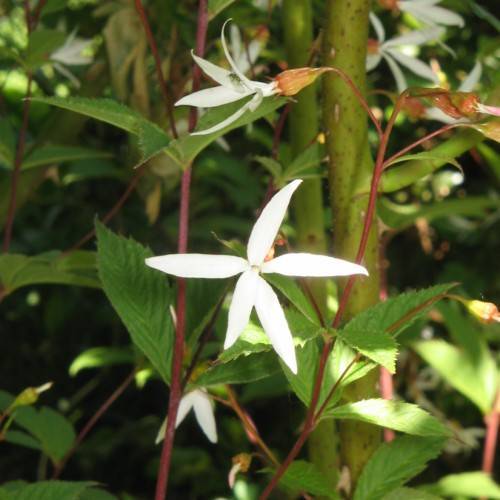
Indian physic
Porteranthus trifoliatus
Cycle:
Herbaceous Perennial
Watering:
Average
Hardiness Zone:
4 - 8
Flowers:
Flowers
Sun:
Full sun,part shade
Leaf:
Yes
Growth Rate:
Low
Maintenance:
Low
Drought Tolerant:
Yes
Salt Tolerant:
Yes
Thorny:
Yes
Care Level:
Medium
watering
Indian physic should be watered regularly with the following guidelines: - Water every 2-3 days, depending on the weather conditions and season. - Make sure that the soil is evenly and lightly moist, without being waterlogged. - During periods of hot weather, water a little more frequently, or in the morning hours to avoid over-watering. - During periods of cold weather, water less frequently, but ensure that the roots of the plant do not dry out. - Avoid wetting the leaves of the plant to discourage fungal diseases. - Once established, Indian physic requires little to no fertilizing and prefers well-drained, neutral to slightly acidic soil with some organic matter. - Consider adding a layer of mulch around the base of the plant to help regulate the soil temperature and maintain moisture. Following these guidelines should give Indian Physic a healthy environment to thrive.
sunlight
Indian physic (Porteranthus trifoliatus) is a flowering plant species native to Eastern North America that thrives in sunny, dry habitats. During the growing season, this perennial plant prefers full sun exposure throughout the day. When planted in sunny sites, the plant can receive up to 10 hours of direct sunlight per day. When planted in shaded sites, they should receive no less than 6 hours of direct sunlight per day to ensure their optimal growth and flower production. During the winter, Indian physic can be damaged by the cold and should not be exposed to full sun for more than 2 or 3 hours per day. Additionally, excessive moisture can weaken the plant, so it is important to plant in well-drained soil and reduce watering during winter months.
pruning
Indian physic should be pruned every spring to encourage new growth. Aim to prune a third of the plant back each time to help avoid over pruning. To begin, prune back all old and damaged branches to promote a healthier plant. Next, thin out the stem and branches to allow enough room and light for new growth. Lastly, cut branches that are growing too closely together or in an odd pattern. Pruning Indian physic regularly will help keep your plant healthy, and will promote overall growth.
